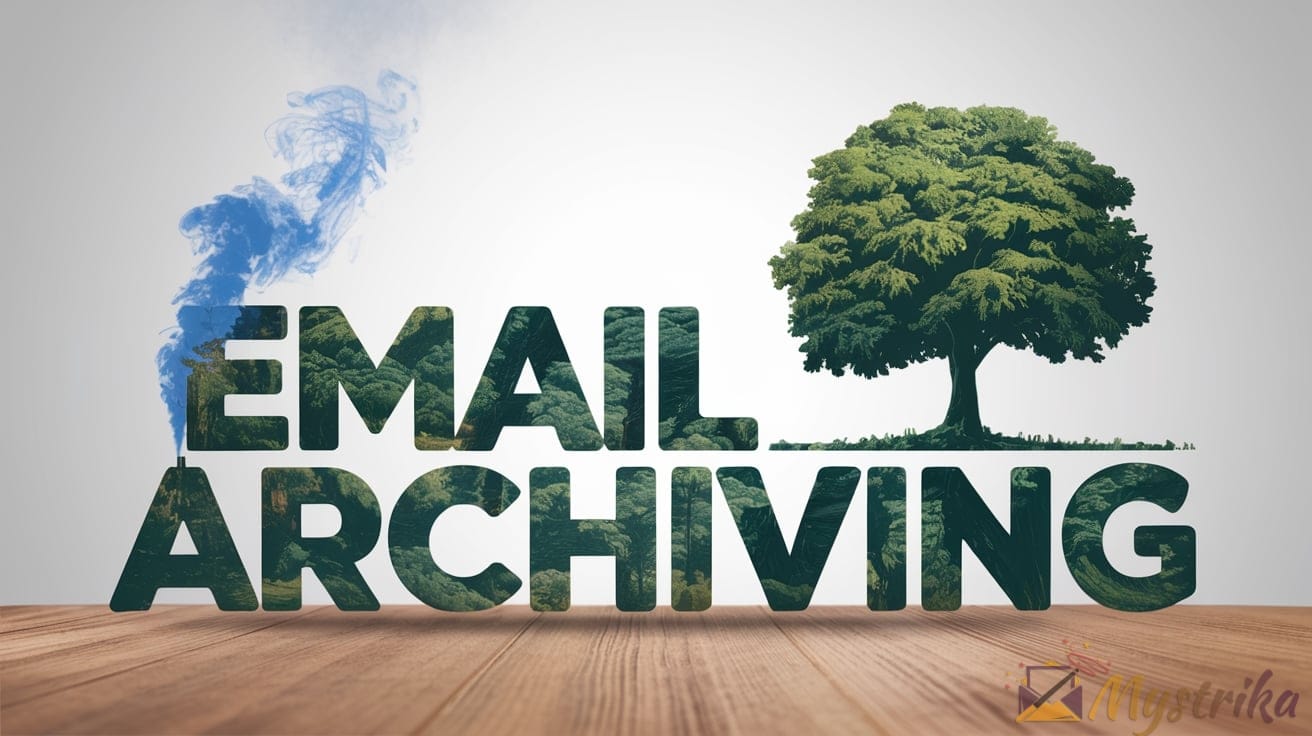Is your organization drowning in overflowing inboxes, vulnerable to compliance fines, and wasting time on eDiscovery requests? Get back on solid ground with these best practices for unlocking the immense benefits of email archiving.
Why Email Archiving Matters
Email archiving may seem like an extra hassle, but it delivers major benefits that make it a smart data management strategy. Here’s why setting up an email archive system should be a top priority.
Compliance and Data Retention
Depending on your industry, there are likely regulations that mandate keeping emails and other electronic communications for a certain period of time. For instance:
- Healthcare organizations must retain patient data for 6 years under HIPAA.
- Financial companies must store client communications for 3-7 years to satisfy SEC and FINRA rules.
- Many businesses need to keep emails 5+ years to comply with tax codes.
Without an email archiving system, you’ll struggle to consistently meet these data retention requirements. An archive automatically captures and indexes emails so you have everything neatly stored and easy to reference. No more stressing about saving emails correctly or digging through disparate mailboxes.
eDiscovery Preparation
If your organization gets caught up in a lawsuit or investigation, you’ll need to rapidly produce relevant emails on request. This process is called eDiscovery.
Relying on employees to manually search through overloaded mailboxes is hugely inefficient for eDiscovery. With an archive, you can quickly search across all historical messages based on sender, recipient, date range, keywords, etc. Email archiving dramatically simplifies eDiscovery to save legal costs.
Protection Against Data Loss
It’s all too easy for end users to permanently delete important business emails by accident or intentionally. Pointing to your email retention policy offers little help once the damage is already done.
Archiving creates a backup copy of all messages flowing through your organization. So if emails are deleted from someone’s inbox, you can still retrieve them from the archive. This provides protection from both intentional and accidental data loss.
Optimizing Mailbox Performance
Overstuffed mailboxes drag down Outlook/Gmail performance and complicate inbox organization. Offloading older messages to an archive clears out mailbox clutter.
Microsoft recommends keeping .pst files under 75GB. Archiving older data helps end users stay below this size limit, ensuring speedy inbox access.
Freeing Up Office 365 Storage
Speaking of size limits, Microsoft caps Office 365 mailboxes at 100GB (or unlimited with certain legacy plans). Google Workspace sets mailbox limits between 30GB and unlimited.
Once your users start butting up against those ceilings, productivity grinds to a halt. Archiving older emails is like hitting the reset button on your storage without having to pay for mailbox upgrades.
The Expense of Inaction
Between eDiscovery fines, regulatory penalties, and lost productivity from overloaded mailboxes, failing to archive emails comes at a real cost.
One survey found that the average cost of data loss per incident was $3.86 million. Don’t let your organization become a cautionary statistic around data management.
The stakes around email retention and discovery have never been higher. Investing in an archive system pays compliance, legal, and productivity dividends that easily justify the expenditure. Given the risks of inaction, email archiving delivers an exceptionally high ROI.
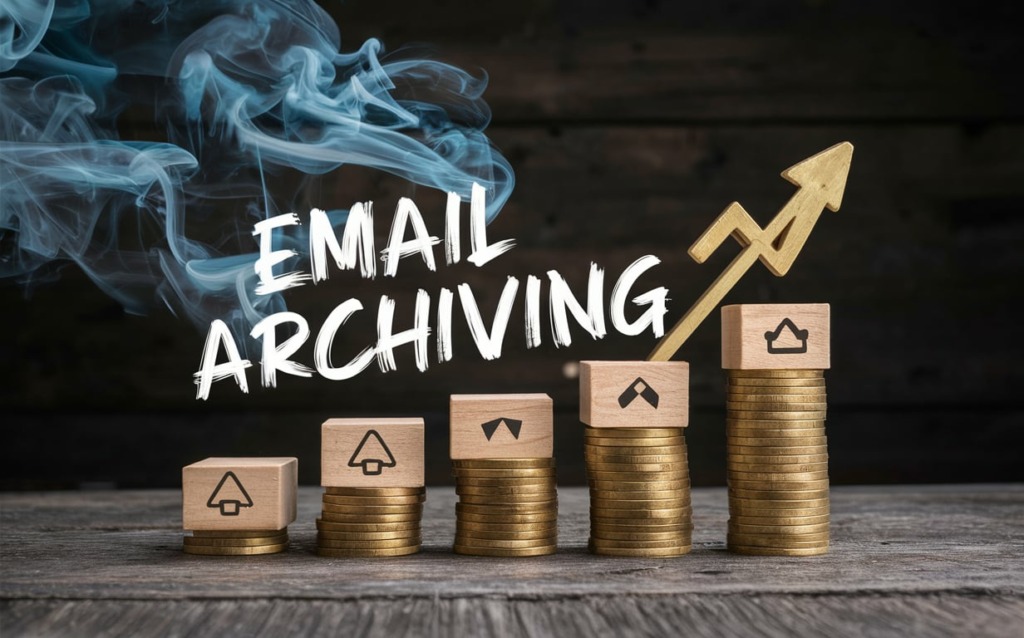
Email Archiving Methods
When implementing an email archiving strategy, the first big decision is whether to use a cloud-based or on-premise solution. There’s also the option of a hybrid model. Let’s compare the pros and cons of each approach.
Cloud-Based Email Archiving
Cloud archiving services offer email backup and retention capabilities through offsite data centers. Instead of managing hardware and servers in-house, you rely on the vendor’s infrastructure.
Benefits of Cloud-Based Archiving
Low Maintenance
The cloud provider handles all hardware maintenance, software updates, and performance optimizations for you. No need to dedicate internal IT resources.
Scalability
Cloud archiving solutions easily scale up as your email volume grows. You simply pay for what you need, with many vendors offering tiered pricing plans.
Accessibility
Users can access archived messages from anywhere with an internet connection. You aren’t limited by physical location.
Faster Deployment
Cloud solutions let you get up and running quickly without lengthy setup and configuration. Just complete the vendor onboarding process and roll out the policies.
Compliance
Leading services adhere to security standards like SOC 2 and employ robust measures like encryption that satisfy legal requirements.
Top Cloud Archiving Solutions
Here are some of the most prominent cloud-based email archiving platforms:
- Mystrika: Offers unlimited storage and users. Message indexing, tags, legal hold, granular permissions. Native integrations with Gmail, Office 365, and Outlook.
- Google Vault: Native Gmail/Workspace archiving with unlimited storage, retention policies, search, legal hold, and eDiscovery.
- Microsoft 365: Built-in compliance features like retention policies, content searches, legal hold, audit log, and unlimited storage.
- Proofpoint: Highly scalable archiving with granular search and compliance tools for messaging and social media data.
Key Features to Evaluate
When reviewing cloud archiving solutions, look for these critical capabilities:
Automated Data Capture
The system should automatically capture emails from your organization’s domains without relying on manual user input.
Custom Retention Policies
Configure retention rules like “7 years for financial documents” that align with your compliance needs.
Legal Hold
Freeze specified messages so they cannot be altered or deleted, even if the retention period expires. Critical for eDiscovery.
Secure Encryption
End-to-end encryption protects archived data in transit and at rest. The provider should detail their specific encryption standards.
Search and Analytics
Quickly find messages based on sender, recipient, date range, keywords, etc. Analytics help identify trends.
Message Restoration and Export
Restore archived emails back to a user’s inbox when needed. Also able to export messages in standard formats.
On-Premise Email Archiving
With on-premise archiving, you deploy the hardware and software internally and manage the infrastructure. This contrasts public cloud solutions.
Benefits of On-Premise Archiving
Data Control
Your emails stay within your organization’s controlled network environment and are not stored externally in the cloud.
Leveraging Existing Infrastructure
You can build upon current IT infrastructure like storage hardware and networking.
Compliance
Some regulated industries like financial services require on-premise data retention solutions.
Top On-Premise Archiving Solutions
Here are some of the most widely used on-premise email archiving platforms:
- Barracuda: Powerful retention and discovery tools including message-level encryption and cloud replication options.
- Mimecast: Scalable archiving with granular search, custom retention policies, and native Office 365 integrations.
- Proofpoint: Feature-rich solution offering capture from 100+ channels, legal hold, and automation tools.
- Veritas: In-depth analytics around message sentiment, auto-tagging, and AI search to speed eDiscovery.
Key Considerations for On-Premise
There are some distinct aspects to weigh with on-premise email archiving:
Storage and Maintenance Costs
You’ll need to budget for adequate storage hardware and IT staff time for managing the system.Updating hardware every 3-5 years adds to long-term expenses.
IT Expertise Required
Properly maintaining on-premise archives requires skilled IT resources to configure, monitor, troubleshoot, and apply updates.
Upgrade Requirements
As your archiving needs grow, you may face disruptive system migrations to expand the on-premise infrastructure.
Data Security Responsibilities
Your IT team shoulders the burden of providing physical, network, and application security for the archive.
Overall, on-premise archiving grants organizations complete control over data retention and discovery operations. But it comes with greater resource overhead compared to third-party cloud services.
The Hybrid Option
With hybrid archiving, data is stored locally and also replicated to a cloud repository. This blends the accessibility of the cloud with the data control of on-premise infrastructure. It offers a balance between the two approaches.
For instance, you could deploy Mimecast or Proofpoint on-premise for active archiving but also mirror data to AWS/Azure for redundancy and long-term retention. Hybrid models help future-proof archiving strategies while easing compliance burdens.
The optimal email archiving deployment – cloud, on-premise, or hybrid – depends on your regulatory environment, risk tolerance, and IT resources. Defining requirements around data control, accessibility, long-term retention, and discovery capabilities helps inform the ideal fit.
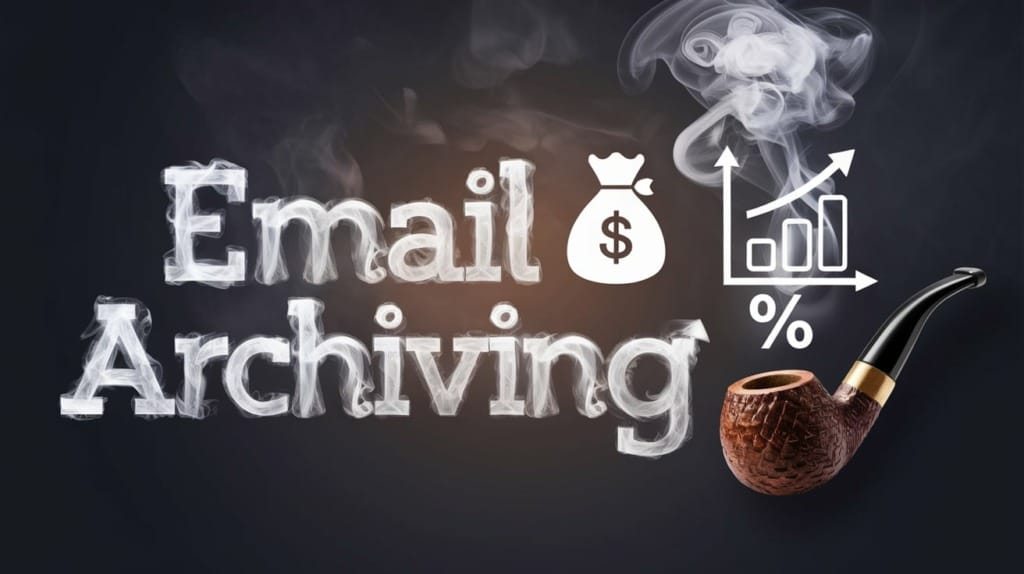
Email Archiving Best Practices
Implementing the right archiving technology is essential, but effective policies and procedures will determine the initiative’s success. Follow these best practices to get optimal value from your email archive.
Establish Company-Wide Policies
The first step is defining organization-wide policies around email retention, searchability, legal holds, and user responsibilities. Align these policies with legal/regulatory obligations and get executive buy-in.
Address questions like:
- What messages must be retained and for how long?
- Who can search the archive and export messages?
- How are legal holds initiated and managed?
- What end user training is required?
Document the policies and procedures thoroughly. Having official guidelines makes it easier to enforce email archiving consistently.
Balance Performance and Data Integrity
Most archiving solutions capture emails as they pass through the email server. This provides reliable data capture without relying on employees.
However, some organizations implement journaling policies that sync messages from local PST files into the archive. If poorly optimized, pulling large quantities of mailbox data can degrade performance.
Here are tips to avoid issues:
- Schedule journaling during off-peak hours like overnight to avoid bandwidth conflicts.
- Stagger journaling so only a portion of mailboxes sync each day.
- Monitor resource usage and throttle journaling if servers are overloaded.
- Only journal necessary mailboxes rather than every single account.
The goal is to reliably capture all relevant emails without letting journaling bog down servers. Find the right balance between data integrity and system resources.
Test Restoration Capabilities
One of the main benefits of archiving is recovering lost/deleted emails. However, if restoration processes aren’t tested, they may fail when really needed.
Schedule regular test restores to verify that:
- Messages can be located based on archive search tools.
- The restored emails contain complete header, body, and attachment data.
- Restored messages sync back to the end user’s inbox as expected.
Document any issues encountered and work with your vendor or IT team to optimize the restoration workflows.
Maintain Indexes for eDiscovery
Email archives are enormously valuable for quickly producing messages in response to lawsuits, audits, and investigations.
To accelerate legal eDiscovery requests, make sure your archive indexes critical metadata fields like:
- From/To/CC/BCC
- Subject
- Date range
- Attachments
- Folder path
- Compliance tags
- Custom defined fields
Proper indexing allows counsel to rapidly find responsive messages through archive searches. Prioritizing indexes for eDiscovery saves significant time and legal expenses.
Confirm Legal and Compliance Requirements
While defining policies, verify that your archiving set up complies both with corporate standards and external regulations. Key factors include:
Retention Duration
Certain industries mandate retaining emails for minimum periods like 7 years in finance and 10 years in healthcare.
Data Privacy
Archiving systems must protect confidential data like customer information, medical records, or credit card numbers.
Audit Controls
Monitoring access attempts, export actions, deletions, and configuration changes provides an audit trail.
Legal Holds
Verify your archive can freeze specified messages indefinitely so they cannot be altered or deleted.
Continuously reconfirm that the archive policies adhere to evolving legal standards and compliance controls.
Regularly Monitor the Archive
Don’t just set up archiving policies and forget about them. Actively monitor the system to catch any potential issues early.
- Review storage usage trends to predict when additional capacity may be needed.
- Verify that messages are capturing from all required mailboxes and domains.
- Check index quality to ensure eDiscovery searchability.
- Confirm that legal holds remain intact and effective.
- Audit user search and export activity.
Make archive monitoring part of your routine compliance reviews. Ongoing visibility ensures the archive remains effective over time.
Educate Employees on Policies
Adequately train employees on email archiving policies, emphasizing how the procedures benefit them. Set expectations around:
- Retention and deletion rules. Explain that email deletion does not remove messages from the archive.
- Privacy – messages may be searched and exported by authorized parties. Caution against inappropriate content.
- Legal holds – relevant messages may be held indefinitely on request.
- Access protocols – clarify who can search and restore archived information.
Ongoing user education helps align individual behaviors with the archiving program for maximum impact.
Email Archiving Checklist
To recap, here is a checklist of key best practices:
- [ ] Establish company-wide archiving policies and procedures
- [ ] Balance performance and integrity when capturing message data
- [ ] Perform test email restores to verify capabilities
- [ ] Maintain indexes optimized for eDiscovery requirements
- [ ] Continuously confirm legal and compliance obligations are met
- [ ] Monitor archive storage, data capture, legal holds, user actions
- [ ] Educate employees on archiving policies and appropriate email use
Following these steps will help ensure your email archiving initiative delivers significant risk reduction and productivity gains while remaining transparent to end users. Adjust policies over time to account for company growth and evolving regulations.

Pricing Considerations for Email Archiving
Email archiving costs are driven by various factors depending on deployment model. Here’s an overview of pricing models and cost considerations.
Cloud Archiving Pricing
For cloud solutions, pricing typically follows one of two models:
Per User
Vendors charge a monthly fee per user, scaled across tiers based on volume. For example, Proofpoint charges $4 per user up to 2,000 users, with cheaper rates beyond that.
Storage Volume
Pricing is based on your capacity needs like $X per GB/TB per month. Some vendors offer unlimited storage like Mystrika.
Additional factors impacting cloud pricing:
Data Retention Duration
Storing data for longer periods like 10+ years may lead to premium charges.
Support Tiers
More responsive support levels and advanced access carry higher fees.
Add-Ons
Added capabilities around encryption, integrations, and customization add cost.
Egress Fees
Transferring large amounts of data out of the archive may incur “egress” charges.
Premium Features
Advanced tools like custom metadata, intelligent search, and analytics may cost extra.
Minimums
Some plans enforce minimum user or storage requirements, even if unused.
Discounts
Volume discounts based on user count and multi-year contracts help reduce cost.
On-Premise Archiving Costs
On-premise archiving requires large upfront infrastructure purchases and ongoing IT overhead for maintenance.
Software Licensing
Perpetual licenses for archiving systems like Proofpoint Enterprise Archive cost $50-$100+ per user. Ongoing maintenance fees also apply.
Storage Hardware
Sufficient NAS or SAN storage hardware for multi-year data retention runs tens of thousands of dollars or more.
Data Migration
Transferring archive data to new infrastructure as storage needs grow incurs downtime and labor costs.
IT Administration
At least one dedicated storage admin earning $70K+ per year helps manage the on-premise archive.
Facilities
Data center space, power, and cooling amounts to ~$200 per square foot. Disaster recovery sites add further overhead.
Support Contracts
Optional vendor support contracts provide expert assistance but add 20-25%+ to the overall cost.
Upgrades
Storage and software refreshes every 3-5 years require capital outlays and project costs.
On-premise offers greater control but requires significant IT infrastructure and staffing expenditure compared to cloud solutions.
Hybrid Model Costs
With hybrid archiving, you take on partial infrastructure costs for local storage while also paying cloud subscription fees:
- Software licensing for the local archive application
- Maintenance and support costs
- Cloud archive fees based on usage
- Replication and data transfer fees between sites
Overall costs sit between pure cloud and pure on-premise solutions. The balance depends on how much local infrastructure you choose to maintain.
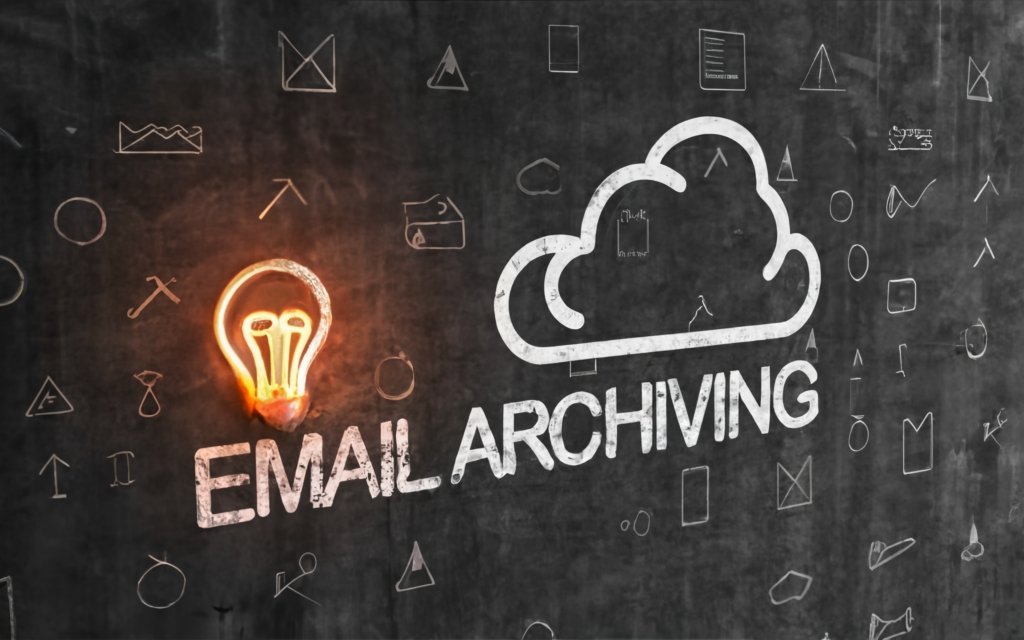
Key Benefits of Email Archiving
Considering the costs involved, what’s the actual ROI of deploying an email archiving solution? The benefits span risk reduction, productivity gains, IT optimizations, and long-term data integrity.
Risk Mitigation for Legal Compliance
Email archives provide insurance against steep regulatory and litigation expenses. Some examples:
- Avoiding HIPAA fines up to $1.5 million per violation for improper patient record handling.
- Preventing SEC penalties like the $35 million levied against JP Morgan for unretained advisor emails.
- Defending against investigations and lawsuits thanks to streamlined eDiscovery.
- Adhering to financial regulations that mandate email retention for 7 years or more.
Mitigating these compliance and e-discovery risks saves organizations serious fines and legal fees over the long run.
Increased Workforce Productivity
On average, employees spend 4.1 hours per week searching for misplaced emails according to Forrester Research. With an archive, users can quickly find messages via simple searches.
End users also achieve:
- Faster inbox access without paging through years of messages
- Granular restore of individual emails when needed
- Reduced inbox quotas by offloading older messages
- Smarter inbox organization without old messages cluttering folders
The productivity and efficiency gains from enhanced email manageability provide tangible workforce benefits.
Improved IT Performance
Large, clogged mailboxes degrade Microsoft Exchange and Office 365 performance over time. Archiving offloads messages from overloaded servers, improving responsiveness.
IT also gains:
- Protection from lost messages disrupting operations
- Faster troubleshooting with indexed, time-stamped archives
- Elimination of PST sprawl across local devices
- Centralized access controls and auditing across the organization
- Seamless support for larger mailboxes and longer retention durations
The enhanced visibility and email infrastructure optimizations boost IT productivity and resilience.
Enhanced eDiscovery Capabilities
Searching multiple PST files, individual mailboxes, and journaled messages to comply with legal requests is a huge burden.
With a unified archive, authorized staff can instantly:
- Search across all historical messages company-wide
- Export responsive emails with complete accuracy
- Place legal holds to preserve pertinent communications
The ability to swiftly produce necessary information for audits and lawsuits provides major time and cost reductions.
Long-Term Data Preservation
Email contains vital business information that organizations need to retain and reference for years. Local mailboxes and backups offer finite retention and risk being deleted or lost.
Centralized archives preserved in the cloud or secure data centers provide durable long-term storage not dependent on any single server. Messages remain retrievable as long as legally necessary.
The Tangible ROI
Organizations that deploy email archiving solutions see substantial benefits:
- 20-50% faster search and recovery of lost emails
- 50-90% reduction in time spent on eDiscovery requests
- 30%+ improvement in mailbox access speed
- 40%+ drop in PST related tickets and issues
- 60%+ reduction in non-compliance exposure
The mix of risk reduction, productivity gains, and IT optimizations deliver a compelling ROI for searchable, resilient email archives.
Evaluating the Right Email Archiving Solution
With the myriad options available, here are the pivotal factors to consider when determining the ideal email archiving fit for your organization.
Cloud vs. On-Premise Decision
First, decide whether you want to use a cloud-based solution operated by a vendor or deploy on-premise infrastructure internally.
Consider cloud archiving if:
- You have limited in-house IT resources to manage storage and applications.
- You need a rapidly scalable solution that handles growth seamlessly.
- You want predictable OpEx pricing rather than major CapEx hardware investments.
- Your business is geographically dispersed across multiple offices.
Consider on-premise archiving if:
- You must maintain absolute control over data security and privacy.
- You have robust IT infrastructure and resources already in place.
- Your industry (like financial services) has strict regulations around data residency.
- You want to fully customize the archive rather than use a packaged SaaS solution.
If aspects of both scenarios apply, a hybrid model may be optimal. This brings us to…
Budgeting for an Ideal Pricing Model
Realistically budgeting based on your growth, storage, and feature needs is key.
For cloud solutions , validate thatsubscription charges fit within acceptable limits as your usage grows. Avoid unexpected overage fees.
With on-premise archives , plan out the large CapEx purchases required over time. Include maintenance, upgrades, and IT staff overhead.
For hybrid models , validate you can manage the split between local infrastructure costs and cloud subscriptions.
Compare TCO projections to build a thoughtful forecast budgeting for current needs and future scale.
Ease of Use and Management
An archiving system must be simple for end users while providing sophistication for admins.
Key user capabilities:
- Intuitive search to find messages quickly
- Role-based access controls
- Clear system status and performance monitoring
- Detailed audit logging of all access and actions
- Automated policies that execute consistently
- Flexible retention rules and legal hold management
Prioritize solutions that balance user simplicity and admin control to maximize business benefit.
Security and Compliance Standards
Email frequently contains sensitive data making security critical. You’ll want:
- Encryption safeguarding data in transit and at rest
- Access controls restricting unauthorized actions
- Isolation from network vulnerabilities
- Protection against data loss or corruption
- Configurability to adapt controls as risks evolve
Also confirm the system allows consistently adhering to your regulatory requirements.
Scalability for Business Trajectory
Finally, understand your trajectory. An archive needs to fluidly accommodate:
- Growth in mail volume as your company expands
- Increasing retention duration needs over time
- Larger storage capacity demands
- Potential M&A integration where companies merge archives
- Shifting geographic footprint like new regional offices
Choose a path that aligns with where you’re headed, not just current circumstances.
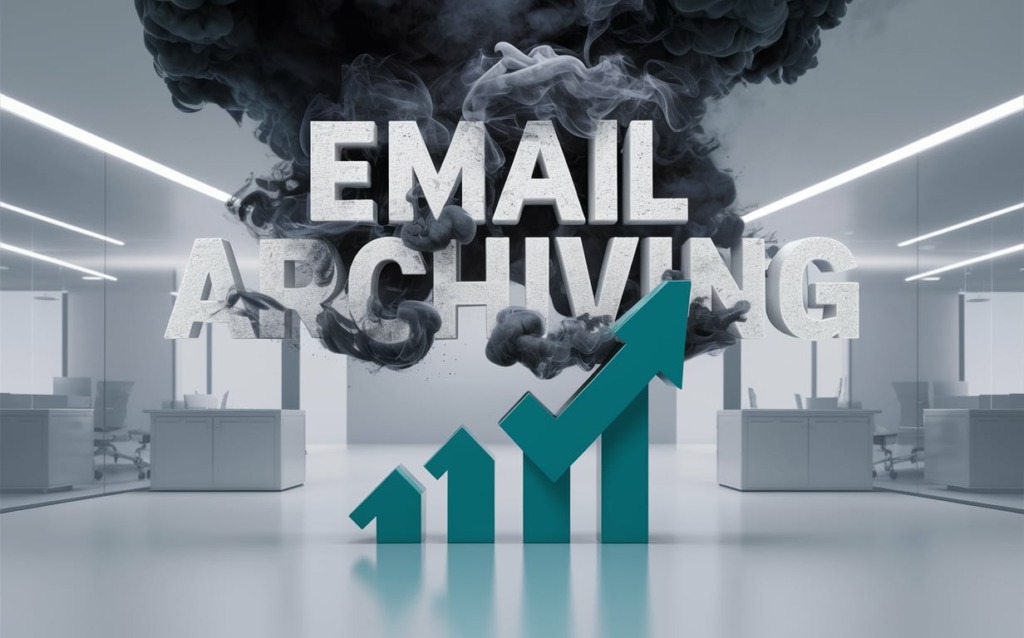
Making a Successful Transition to Email Archiving
Once you’ve selected an archiving platform, how do you systematically roll it out across the organization? Follow these best practices for transitioning to a new email archive.
Establish Timelines and Milestones
To keep stakeholders aligned, build a detailed project plan covering:
Phase 1 – Design and Configuration
- Document user and admin workflows
- Model infrastructure and integration requirements
- Install core archive system
- Configure access controls and policies
- Set up indexes, encryption, storage
Phase 2 – Pilot Testing
- Perform test captures from sample mailboxes
- Validate search, legal hold, and export capabilities
- Refine configurations based on feedback
- Scale up for broader departmental pilot
Phase 3 – Training and Adoption
- Develop user-facing policies and job aids
- Deliver administrator and end user training
- Publicize go-live dates and support resources
- Bring new mailboxes online in gradual waves
- Monitor system health and user adoption
Phase 4 – Refinement
- Fine-tune policies and configurations
- Develop ongoing training and support programs
- Identify new use cases and expansion opportunities
Having a phased, milestone-driven rollout plan helps ensure a smooth transition.
Identify Key Stakeholders
Your archive initiative requires collaboration across departments – identify key players early on.
- Senior leadership – Set vision. Allocate resources. Enforce compliance.
- Legal/compliance – Define retention policies. Guide legal holds.
- IT – Execute deployment. Maintain infrastructure. Manage configurations.
- Security – Review access controls, encryption, data protection.
- End users – Provide workflow feedback. Learn new tools. Adopt policies.
- Help desk – Support user questions. Troubleshoot issues.
Rally these stakeholders early in a steering committee capacity to promote alignment.
Develop Policies and Procedures
Draft new policies addressing:
- Retention rules – What data must be preserved and for how long?
- Collection methods – How are emails ingested: journaling, cc:, server capture?
- Access controls – Who can search, export, delete, place legal holds?
- User responsibilities – Expected actions and prohibited activities.
- Security protocols – Encryption, access logs, network separation.
- Recovery processes – Admin and end user email restore workflows.
Document procedures around configuration, auditing, legal holds, adding new data sources, troubleshooting, etc.
Formal standards are essential for consistent, compliant email archiving.
Configure the Archiving Solution
Use the design phase to optimize setup:
- Activate data ingestion methods like journal rules and server captures.
- Integrate with on-premise or cloud directories for access control.
- Establish storage architecture, retention policies, and backup processes.
- Activate features like encryption, retention rules, legal hold workflows.
- Build indexes to balance searchability and confidentiality.
- Create audit logs recording administrator and user actions.
Thoughtful configuration and testing during rollout prevents issues down the line.
Test and Validate the System
Before wide launch, perform end-to-end testing to confirm:
- Emails are reliably captured from all required sources.
- Retention rules execute properly per policy.
- Searches surface messages quickly and completely.
- Authorized staff can place and remove legal holds.
- Recovery processes successfully restore archived data.
- Storage capacity scales as expected.
- Access controls restrict unauthorized actions.
Use pilot groups to validate workflows before expanding organization-wide.
Train Employees on New Processes
User engagement ensures adoption success. Address:
End User Training
- Searching the archive to recover deleted or lost emails.
- Message deletion vs. archive policies.
- Who can access and search archived emails.
- Proper email decorum given archives.
Administrator Training
- Configuring and managing archiving policies.
- Performing legal hold and eDiscovery searches.
- Troubleshooting infrastructure issues.
- Optimizing searchability and recovery.
Ongoing training gives employees the knowledge to follow policies and leverage the capabilities.
The Future of Email Archiving
Email archiving solutions will continue advancing to help organizations adapt to changing workplace practices, exploding data volumes, and evolving regulations.
Artificial Intelligence and Advanced Analytics
Look for archives to increasingly leverage AI to:
- Automate policy application through machine learning models, reducing manual configurations.
- Map semantic relationships between messages and people using natural language processing.
- Surface hidden insights within archive data through neural analysis of content, trends, and patterns over time.
- Prioritize search results based on context, sentiment, and concept tagging.
- Simplify eDiscovery via automated document review and identification of legally sensitive items.
As archives grow into “data lakes” of workplace communication, AI will help manage, analyze, and extract value from this vast content repository.
Expanded Hybrid Deployment Options
Organizations want the cost efficiency of cloud archiving but with local control over some data.
- More solution providers will offer flexible hybrid models , rather than forcing cloud-only or on-premise-only choices.
- Integration will improve between on-premise and cloud repositories , enabling unified data oversight.
- Hybrid workflows like archiving locally then tiering colder data to cloud will become more common.
- Organizations may bypass third-party cloud services and instead leverage public cloud object storage like AWS S3 for archived data.
Hybrid gives organizations the ability to balance access, control, flexibility, and TCO based on specific retention needs.
Closer Integration with Cloud Productivity Suites
As platforms like Office 365 and G Suite dominate business communication:
- Native retention, eDiscovery, and compliance tools will reduce dependence on third-party archives.
- Organizations will favor archives offering seamless integration over disjointed bolt-on products.
- Archives will move beyond email to unify management of emails, files, chats, videos and other cloud data sources.
- API integration will help automate policy coordination between archives and cloud suites.
Archives will evolve to become tightly unified layers enhancing compliance, discovery, and insight across core cloud collaboration platforms.
Automating Data Lifecycle Management
Manually managing exponential data growth across systems isn’t sustainable. Emerging capabilities will help:
- Auto-apply retention policies based on content types, user roles, regulatory factors etc.
- Automatically identify and delete obsolete data past expiration.
- Tier storage based on access patterns, moving colder data to cheaper systems.
- De-duplicate redundant information across communication channels.
- ** Migrate** seamlessly between on-premise, cloud, and hybrid architectures.
Automating mundane data wrangling based on human-defined policies frees IT staff for strategic priorities.
Continued Focus on Security and Compliance
Evolving privacy regulations will force archives to keep advancing security:
- Access controls will become more granular and identity-aware.
- Encryption will spread beyond transit and rest to encompass search, analytics, and exchange with apps.
- Emphasis on data minimization and deletion will grow.
- Workflow transparency and auditability enables proving compliance to regulators.
- Support for regional data sovereignty, residency, and cross-border transfer rules.
Archives will enable secure cross-system information governance – not just passive data storage.
The Road Ahead
Email archives will transform from isolated silos into:
- Integrated insight layers atop cloud collaboration suites
- Intelligent data stewards automating governance
- Flexible hybrid data planes balancing access, control, and TCO
- Guardians of security and compliance beyond just retention
The continued evolution of email archiving technology will help organizations extract maximum value from institutional data assets over the long haul.
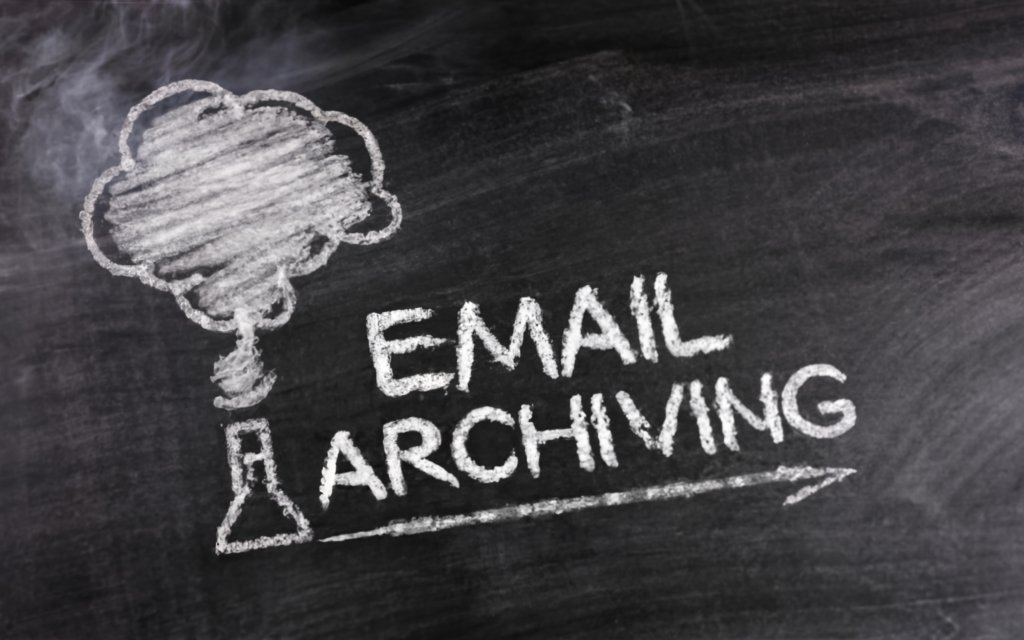
Key Takeaways – The Complete Email Archiving Guide
Email archiving delivers immense risk reduction, productivity, and compliance benefits once deployed properly. Here are the key lessons to help you succeed:
- Email archiving is essential for reliable data retention, prevention of data loss, simplified eDiscovery, and optimized performance.
- A cloud-based archive reduces infrastructure costs but relinquishes some data control. An on-premise archive provides greater control at a higher price.
- Define comprehensive archiving policies addressing retention, privacy, legal holds, security, user access, and more.
- Balance performance when ingesting email data to avoid overtaxing servers.
- Test vigorously to validate search, legal hold management, and data restoration capabilities.
- Maintain indexes optimized for eDiscovery requirements like regulatory inquiries.
- Monitor archives extensively – storage, data capture, configurations, user actions, etc.
- Provide administrator and end user training to build understanding of policies and procedures.
- Compare solutions based on IT resources required, security needs, compliance mandates, pricing, and scalability.
- Follow a phased rollout plan spanning solution configuration, testing, training, and iterative refinement.
- Ongoing evolution will bring tighter cloud integration, automation, AI, and security advancements to archiving.
With the exponential growth in electronic communications, having a smart archiving strategy is a fundamental pillar of information governance. Use these best practices to craft policies and choose solutions that meet your organization’s unique compliance, risk tolerance, budget, and technical resource needs.
Frequently Asked Questions
Q: What are the main benefits of email archiving?
A: The core benefits are risk reduction for legal compliance, productivity gains, optimized IT infrastructure, simplified eDiscovery, and reliable long-term data preservation.
Q: How much does email archiving cost?
A: Pricing varies widely based on deployment model. Cloud solutions cost $2-$5 per user monthly. On-premise has high upfront infrastructure costs but lower ongoing fees.
Q: What data protection laws mandate email archiving?
A: Regulations like SEC 17a-4, FINRA, HIPAA, SOX, and GDPR have email retention requirements applicable to certain organizations.
Q: How long do email archives need to be retained?
A: Retention duration varies by industry from 3-7 years in finance to 10+ years in healthcare. Define policies based on applicable regulations.
Q: What are the risks of not archiving emails?
A: Major risks include fines for non-compliance, inability to defend lawsuits, permanent data loss from deletion, and inefficient eDiscovery processes.
Q: How do end users access archived emails?
A: Users can search and restore messages directly via Outlook/Gmail plugins provided by most archiving systems.
Q: Can you delete messages from the archive?
A: Users cannot delete from the archive but authorized admins can purge messages after retention period expires.
Q: How do you choose the right email archiving solution?
A: Assess factors like deployment models, security needs, scalability, ease of use, TCO, compliance capabilities, and IT resource fit.
Q: What maintenance is required for email archiving?
A: Minimal for cloud solutions. More extensive for on-premise including storage upgrades, patching, index tuning, policy reviews, etc.

